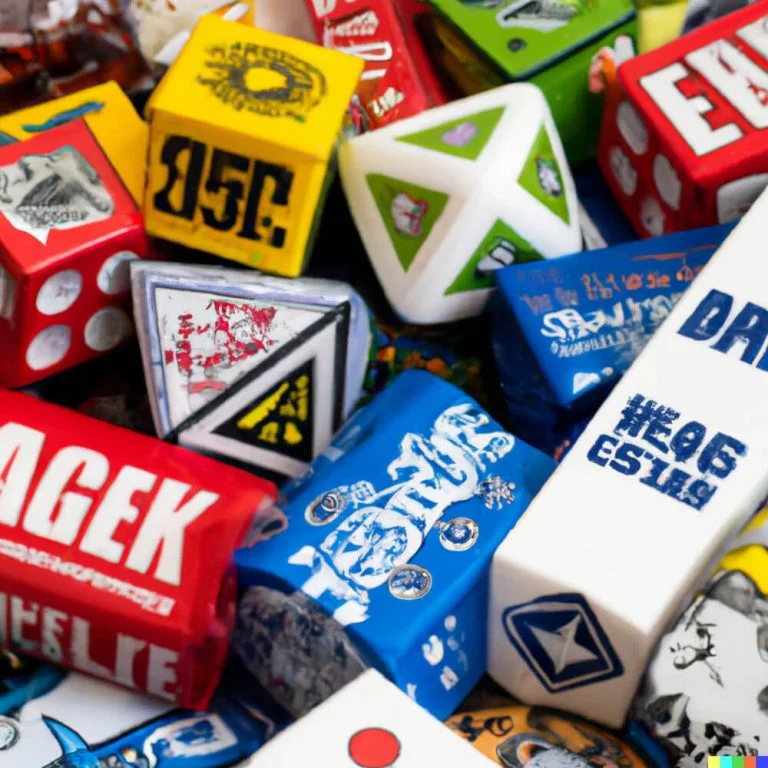Introduction
Board games, defined as games played using a pre-marked surface or board, have been popular forms of entertainment for centuries. This is because they require no special equipment, can potentially be enjoyed by people of all ages, and can be adapted to suit a range of players. Board games often have several components – pieces which interact with the board in some fashion and rules that define how the game is to be played – and many consist of strategy, competition and chance elements. These factors are what make board games so appealing; from engaging the mind in strategic gaming to allowing us to relax with friends or family over a quick round, board games offer something for everyone and can even teach lessons about life in an unfettered way. They also represent different cultures and reflect our shared cultural history. From chess to Monopoly to modern tabletop role-playing games, board games have been beloved for centuries by groups both large and small around the world.
Popular Board Games of the ’50s and Before
Board games played a major role in the 1950s pop culture. People gathered around tables with friends and family to reconnect, de-stress, or just have some fun. Board games had an impact that went far beyond their recreational purposes by providing an avenue for communicating about some of the biggest issues of the time without causing offense or bringing too much negativity.
For example, the game Risk allowed players to discuss the implications of foreign policy decisions without actually having to call names or take sides. Moreover, it gave people the chance to explore how to negotiate and compromise, something that was often lacking in other forms of conversation.
The popularity of board games at this time also acted as a confidence booster for many people. Games like Monopoly and Scrabble allowed individuals to think quickly as well as come up with innovative ideas on how to solve problems and outwit their opponents. Winning one’s fair share of games made them look good in front of their peers and provided them with a sense of satisfaction not easily found elsewhere.
In short, board games were more than just a means of passing the time during the Saturday night party – they were integral pieces in developing a feeling of understanding and shared experiences among different groups from various backgrounds.
Board Games of the ’90s Through the Present
In recent years, board game design has taken a turn towards social dynamics and cooperative play. This is embodied in games like Codenames, The Resistance, Kingdomino and Mysterium. These types of games involve players working together to either defeat an opposing team or group or complete a larger objective within the game. In some cases, they involve psychological warfare and strategy in order to win. They also tend to involve hidden knowledge that can only be revealed through conversation with other players.
In addition to the trend towards co-operative gameplay, modern board games are also often based around popular franchises such as J.K Rowling’s Harry Potter universe, Marvel Comics characters and Bethesda Softworks’ Elder Scrolls world. Board games with these themes typically have an aim of creating stories between the different characters within the set universe rather than simply defeating an adversary or reaching a goal. They allow for compelling story arcs that engage fans of the source material in something outside of just a dice roll or card draw, resulting in something reminiscent of tabletop role playing games but in a much simpler format.
Other staples of modern board game design are medium weight tactics-style games such as Pandemic Legacy, Arkham Horror: The Card Game and Civilization: A New Dawn where one player controls multiple units and must make strategic choices based on both external factors and individual style. These kinds of games layer complex rules and procedures over time, which allows for more variation from game to game – offering a longer lasting challenge that can potentially provide hundreds of hours worth of playtime even after mastering the core ruleset.
Strategies for Family-Friendly Board Games
1. Take into account the interests and skill level of players: Consider what type of game the players would enjoy playing, as well as the level of difficulty they prefer. For example, a strategy board game such as Settlers of Catan may not be appropriate for a younger group, while more simplistic games like Trouble or Chutes & Ladders might be better suited.
2. Select one with short playtime: Choose a game that is quick to understand and doesn’t take too long to complete. This way every player can have an enjoyable time without getting bored or feeling discouraged if they don’t win.
3. Look for versatility: Versatile games that have multiple levels of difficulty or can accommodate different numbers of players tend to be more family-friendly. That way everyone has the chance to get involved, regardless of individual ability or preference.
4. Pay attention to age appropriateness: Make sure that the rules, components and subject matter are suitable for younger players in order to prevent kids from getting frustrated due to lack of understanding or interest.
5. Choose ones with timeless qualities: Games with classic themes will always have staying power—opting for those instead of trendy titles will ensure repeat plays and longevity!
The Future of Board Games
The world of board gaming has gone through some drastic changes over the years, but one thing has remained consistent: board games remain popular and a great way to have fun with friends and family. With so many options out there, it’s no surprise that some of the most famous board games in history include classics like Monopoly, Scrabble, Yahtzee and Clue. But digital formats are also helping to increase the availability of these games and make them more accessible worldwide.
Digital versions of many popular board games come with improved graphics, sound effects, music, and additional game modes which can accommodate different players’ needs. Playing online allows gamers the flexibility to join tournaments and competitions that were previously impossible to enter due to geographical location or time restrictions. This has opened up opportunities for international gamers to challenge one another right from their homes.
As technology continues to advance, companies are continuously offering new board games that meet the changing needs of communities and individual players. The graphic design of modern-day strategy titles isn’t just meant for aesthetic purposes; it also integrates into gameplay as a means of user interaction. Smartphone apps and intelligent consoles such as Nintendo Switch have allowed the boundaries between console video gaming and tabletop gaming to blur even further — giving everyone access to a wide range of different types of entertainment options at home or on-the-go.
Game development organizations have even begun using groundbreaking technologies such as augmented reality (AR) and virtual reality (VR) gaming in order to create truly immersive experiences that you can enjoy with friendsand family across platforms — whether they be physical or digital ones. Board game makers today must continuously innovate in order to stay competitive in this rapidly evolving digital age; however, all signs point towards an exciting future where fun, sustainable forms of entertainment remain an integral part of our lives!
Conclusion
There is no doubt that board games have become firmly established in modern entertainment and are enjoyed among people of all ages. Board games serve as an excellent way to bring family and friends closer together, provide a much-needed break from the hustle and bustle of life, and even offer opportunities for education and developing important skills. To further strengthen bonds among family, friends, and the gaming industry, hosting regular game nights is a great way to share time together and create lasting memories. Moreover, introducing friends to new game ideas can foster their interest within the gaming community. Additionally, supporting local or small businesses within the gaming industry is an excellent way to help these companies thrive while simultaneously learning more about varied types of board games available. Finally, larger scale events such as tournaments or conventions geared toward board games are also effective ways to remain connected with the board game playing community at large for those who prefer competitive play.

I love playing all kinds of games – from classics like Monopoly to modern favourites like Ticket to Ride.
I created this blog as a way to share my love of board games with others, and provide information on the latest releases and news in the industry.





